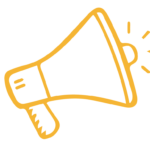I think we can all use a mood-boost at some point throughout the day lately. Whether you’ve fully adjusted to your “new normal” or you’re still struggling to figure things out, there are simple things you can do to improve your mood. Not only are these backed by research for improving mental health, but they don’t have to cost anything at all.
Why Do These Work?
These mood-boosters are things that are thought to stimulate what is called the “vagus nerve.” This nerve connects your brain to many important organs in your body; like the gut, heart, and lungs. It influences your breathing, digestion and heart rate- all functions that can be affected by times of stress. The vagus nerve is also part of your parasympathetic nervous system, or your “rest and digest” system that activates when we relax. The following are thought to stimulate the vagus nerve, allowing you to relax more easily and cope better with stress.
Here is a full day of mood-boosting activities that I recommend. Try one at a time to see what you like best, or follow this sample day to feel calmer and more positive overall.
First Thing
Cold Water: Add 30 seconds of cold water to the end of your morning shower. Bonus if you can do this after some form of exercise, as that’s also known to boost your mood and makes the cold shower feel more bearable. The cold water has been found to stimulate the vagus nerve and can provide an instant energy boost. You can also achieve a similar effect by splashing cold water on your face right after waking up.
Mid-Morning
Deep Breathing: Take a 10-minute break to do some breathwork. Your breath is one of the most impactful resources you have and it’s always with you! Extending the exhale increases relaxation and activates that “rest and digest” system. A simple rule of thumb is to make the exhales longer than your inhales. For example, inhale for 3 counts and exhale for 6 counts. Find a pattern that works for you and simply breathe for 10 minutes. Here are some of my favorite resources for breathwork: Golden Yoga Austin, YogaGlo
Lunchtime
Exercise: You can move your body any time of day, but mid-day can be a great time to plan a workout. Running, sprinting or other high intensity exercise, and lifting weights have been associated with stimulating the vagus nerve.
Mid-Afternoon
Socializing and Laughing: Schedule some social time with a friend or family member. Positive socializing is a simple way to improve your mood and can have a physical effect on your vagus nerve, as does laughter. If you’re solo or just not in a social mood, find a funny show or YouTube clip and let yourself laugh. I believe laughter is one of the most underrated things we can do to improve our mood.
Evening
Massage: After dinner consider giving yourself or your significant other a massage. Massage comes in many forms. If you live alone, a tennis ball or lacrosse ball can be just as good as a deep tissue massage. Foam rolling can also serve as a form of self-massage. And if you have a family or spouse at home, massage can be a great way to connect and relieve stress.
Before Bed
Meditation: Set aside 10 minutes before bed to do a relaxing meditation. The options are endless when it comes to guided meditations. Insight Timer is one of my favorite free options. You can also listen to relaxing music or sit in silence if that’s an option.
Try all or one of these things consistently and see how it makes you feel. These are just a few examples of simple, free tools that have a physiological effect on our bodies and minds. If you’re interested in more information on the vagus nerve and polyvagal theory, here are some resources: Stephen Porges Polyvagal Theory, Accessing the Healing Power of the Vagus Nerve, The Body Keeps the Score
Sign up for our Weekly Wellness email here.











